
LAND OF AMAZING WINES SINCE 1600
Portugal is a leading “old world” wine producer. All of the regions’ in Portugal have their own distinct and unique geological, climatic conditions, native grape varieties, and traditional winemaking methods. There are 47 different wine growing regions within Portugal.
-
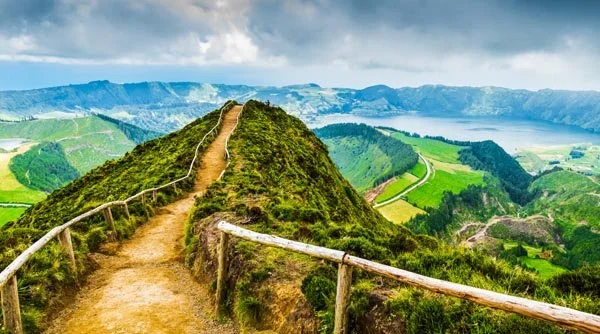
ACORES
Açores is an archipelago composed of nine islands. There are active volcanos, crater lakes, waterfalls, and mountains. The climate is mild with higher moisture. The cool climate is ideal for producing white wines. On the Island of Pico vines are planted in the rock and volcanic soils.
White grapes: Verdelho, Arinto, Terrantez
-

ALENTEJO
Alentejo region covers a third of Portugal. Portalegre is north east of São Mamede mountains, with granite soils, high rain-fall and cold temperatures at night. It has old vines producing wines with complexity and freshness. Borba, Évora, Redondo and Reguengos produce smooth, balanced, very easy-drinking red wines. Alentejo has eight sub-regions Portalegre, Borba, Évora, Redondo and Reguengos, Granja-Amareleja, Moura and Vidigueira.
White grapes: Antão Vaz, Arinto, Alvarinho, Bical, Roupeiro, Diagalves, Manteúdo, Perrum, Rabo de Ovelha, Verdelho, Alicante Branco, Tamarez, Chardonnay, Riesling, Gouveio
Red grapes: Aragonez, Alicante Bouschet, Alfrocheiro, Castelão, Trincadeira, Moreto, Tinta Caiada, Tinta Grossa, Syrah, Petit Verdot, Cabernet Sauvignon
-

ALGRAVE
Algarve is located south of Alentejo. It has Mediterranean climatic conditions to the south and the Atlantic influence to the west. Algarve has four wine regions: Lagos, Portimão, Lagoa, Tavira
White grapes: Alvarinho, Chardonnay, Viognier, Arinto, Malvasia Fina, Manteúdo, Síria
Red grapes: Castelão, Negra Mole, Touriga Nacional, Syrah, Aragonez, Cabernet Sauvignon, Trincadeira
-

BAIRRADA
Bairrada offers some of Portugal’s most exciting wines. It is an important area for sparkling wines. Bairrada has a mild, maritime climate with plenty of rainfall for producing high acidity wines.
White grapes: Fernão Pires, Arinto, Bical, Cerceal, Baga, Maria Gomes, Rabo de Ovelha
Red grapes: Baga, Touriga Nacional, Alfrocheiro, Cabernet Sauvignon, Pinot Noir, Syrah, Merlot
-
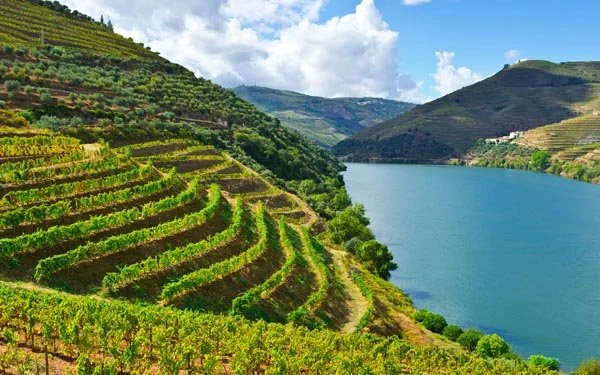
DOURO
Douro is a UNESCO World Heritage site and Portugal’s most famous wine region. Both red and white wines from Douro are made from different grape varieties from the traditional vineyards by foot pressing the grapes in shallow, open wine-fermenters, called lagares.
Douro region has three sub-regions: Baixo Corgo in the west is influenced by the sea and cooler conditions for producing lighter wines. Cima Corgo in the centre around the Pinhão town is protected by the mountains from the maritime influence and about two-thirds of the Douro vineyards are in this area. Douro Superior is closer to the border of Spain has extreme climates of very cold winters and hot summers.
White grapes: Viosinho, Malvasia Fina, Gouveio, Rabigato, Côdega, Donzelinho Branco, Esgana Cão, Folgazão
Red grapes: Touriga Nacional, Tinta Roriz (Aragonez), Touriga Franca, Tinta Barroca, Tinto Cão, Sousão, Bastardo , Mourisco Tinto, Castelão, Rufete, Tinta Amarela, Tinta Francisca
-

VINHO VERDE
Vinho Verde is the largest DOC in Portugal. It has green landscaped rolling hills with cool and rainy conditions. Vinho Verde white wines tend to be light, crisp, aromatic and some with light fizz. Vinho Verde sub-regions are Monção & Melgaço, Lima, Basto, Cávado, Ave, Amarante, Baião, Sousa and Paiva.
White grapes: Alvarinho, Loureiro, Trajadura, Arinto (Pedernã), Avesso, Azal
Red grapes: Borraçal, Brancelho, Espadeiro, Vinhão
-

BEIRA INTERIOR
Beira Interior is the most mountainous region in Portugal. It has some of Portugal's most splendid and highest mountains and oldest vineyards. It has a continental climate; hot and dry in summer and very cold and long winters.
White grapes: Fonte Cal, Arinto, Malvasia Fina, Rabo de Ovelha, Síria R
ed grapes: Bastardo, Marufo, Rufete, Tinta Roriz, Touriga Nacional
-

DAO
Dão is located inland and is surrounded by mountains. It is protected from the continental climate and chill and rains from the ocean. The region is characterised by cold nights, slower ripening, acidic and aromatic, elegant, expressive red and white wines.
White grapes: Encruzado, Bical, Cerceal, Malvasia Fina, Rabo de Ovelha, Verdelho
Red grapes: Touriga Nacional, Alfrocheiro, Jaen, Tinta Roriz
-
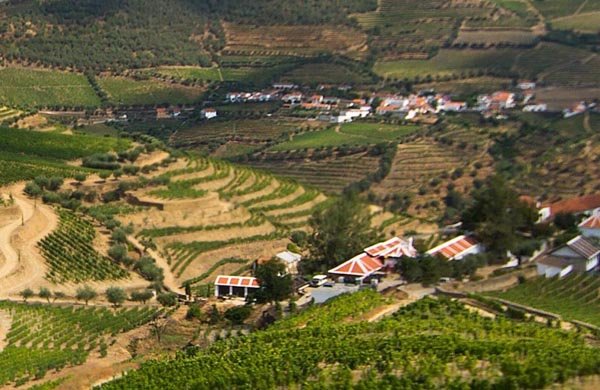
LAFOES
Lafões is a located between the north-west of Douro, and the south of Vinho Verde The wine from the region have high acidity like the wines from Vinho Verde.
White grapes: Arinto, Cerceal, Dona Branca, Esgana Cão, Rabo de Ovelha
Red grapes: Amaral, Jaen, Touriga Nacional
-
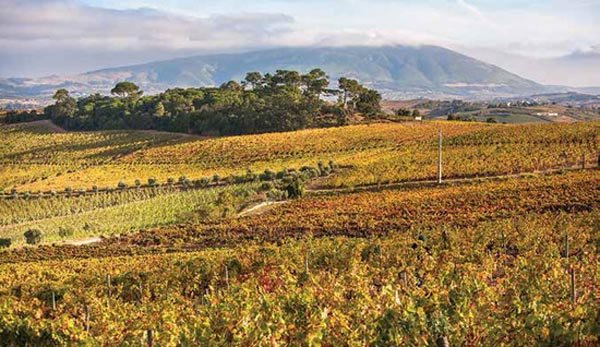
LISBOA
The vineyards from Lisboa date back to the ancient times of the Phoenicians, Romans, Greeks, and Visigoths. The vineyards are influenced by the Atlantic Ocean and soil which are clay-limestone and clay-sand. The nine Lisboa DOC’s produce a wide variety of wines due to the different microclimates within the regions. The nine DOC regions are Alenquer, Arruda, Torres Vedras, Bucelas, Óbidos, Lourinhã, Encostas de Aire, Colares and Carcavelos
White grapes: Arinto, Alvarinho, Fernão Pires, Malvasia, Seara-Nova, Vital, Sauvignon Blanc, Chardonnay, Viosinho
Red grapes: Alicante Bouschet, Aragonez, Castelão, Tinta Miúda, Touriga Franca, Touriga Nacional, Trincadeira, Cabernet Sauvignon, Merlot, Syrah
-

MADEIRA
Madeira producers complex and unique wines. Madeira's fortified wines can age for more than two centuries. The island has mild temperatures all year round. Grapes have high acidity which is the distinguishing feature of all Madeira wines. Madeira grapes Tinta Negra, Sercial, Verdelho, Boal, Malvasia and Terrantez are vinified to different degrees of sweetness from dry, medium-dry, medium-sweet, and sweet with accentuated acidity. Tinta Negra grape variety is planted on about 80% per cent of the island.
-
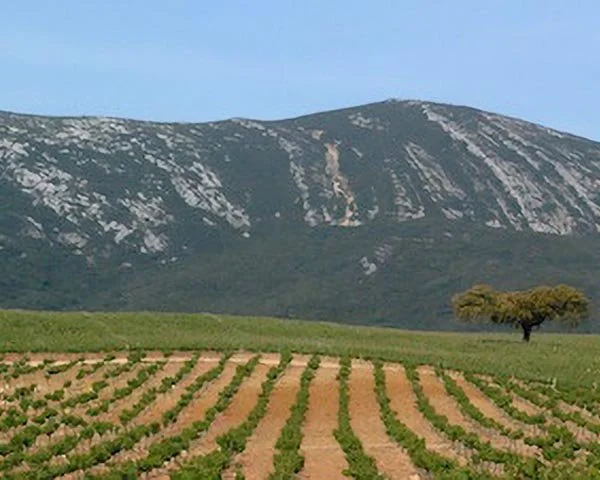
PENINSUAL DE SETUBAL
Península de Setúbal is famous for a fantastic rich, deep gold colored dessert wine called Moscatel de Setúbal. It is located south of Lisboa and is mostly flat with sandy soil except near Serra da Arrábida that has limestone and clay soils. The climate is Mediterranean with dry summers and rainy winters. Moscatel de Setubal is a sweet fortified wine made from the Muscat of Alexandria grape and Moscatel Roxo is made from a pink grape. The two Docs’ are Setubal and Palmela.
White grapes: Muscat of Alexandria, Antão Vaz, Arinto, Roupeiro, Fernão Pires
Red grapes: Aragonez, Alicante Bouschet, Castelão, Trincadeira, Merlot, Syrah, and Cabernet Sauvignon. Touriga Franca, Touriga Nacional
-

TAVORA E VAROSA
Távora E Varosa is a small remote region in the north of the Beira. It borders Douro to the north, and Dão to the south. It has a continental climate with variable temperatures. These high-altitude grapes have good acidity and fruitiness for producing sparkling wines.
White Grapes: Malvasia Fina, Bical, Cerceal, Fernão Pires, Gouveio
Red Grapes: Tinta Barroca, Tinta Roriz (Aragonez), Touriga Franca, Touriga Nacional
-

TEJO
Tejo has distinct climatic conditions that varies across the region. The vineyards closer to Alentejo are planted in sandy soils with dry and hot conditions. In the mountains of Encostas de Aire the vineyards are planted in clay soils with cool and wet conditions. The six sub-regions are Tomar, Santarém, Chamusca, Cartaxo, Almeirim and Coruche.
White grapes: Fernão Pires, Alicante Branco, Arinto, Tália, Trincadeira das Pratas, Vital
Red grapes: Castelão, Trincadeira, Tinta Roriz, Touriga Nacional, Cabernet Sauvignon, Merlot
-
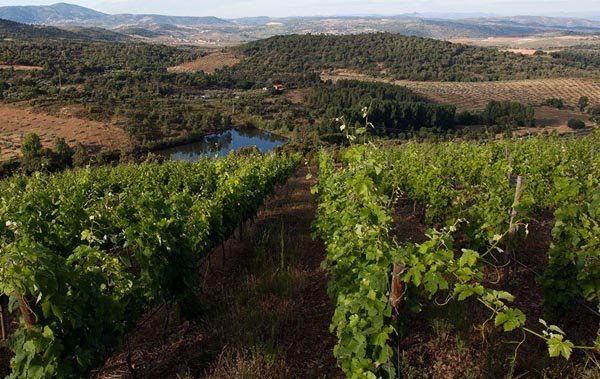
TRAS-0S- MONTES
Trás-os-Montes is in the north east of Portugal. It has a continental climate and has sub-regions: Chaves, Valpaços, and Planalto Mirandês.
White grapes: Côdega do Larinho, Fernão Pires, Gouveio, Malvasia Fina, Rabigato Síria, Côdega, Viosinho
Red grapes: Bastardo, Marufo, Tinta Roriz, Touriga Franca, Touriga Nacional, Trincadeira
Portugal has undiscovered potential for amazing wines. The wines are crafted from about 300 of Portugal’s indigenous grape varietals. Portuguese wines go back 4,000 years to the ancient Phoenicians who established colonies across the Mediterranean and planted vines along the way. During the Renaissance times, Portugal was a leading exporter of wines throughout Europe. Port wine was created in 1600’s in the Douro Valley by adding brandy to the table wine to prevent it from spoiling on hot, bumpy trips around Europe.
WINE QUALITY CONTROL IN PORTUGAL
In Portugal, the Comissão Vitivinícola Regional (“CVR”) the Regional Wine Growing Commissions manage the wine quality. Each regional CVR manages and controls the wine quality to preserve the regions unique characteristics. The CVRs approve the information on the front and back labels of a bottle of wine produced in the respective regions. The letters CVR are on the back label of each bottle as a guarantee of quality.
In the 28 Denominação de Origem Controlada (“DOC”), the defined geographical regions, in Portugal only the approved grapes are permitted for winemaking. To ensure quality the vineyard yields are controlled by the regional DOC’s. Wines with DOC stamp are considered to be of highest quality.
In addition, Portugal is divided into 14 wine regions known as Vinho Regional or (IGP). These IGP have less strict rules for controlling the types of grapes used to make the wines. Producers use the IGP designation to create excellent wines using grapes or blends not allowed in DOC region.
Today in the world markets, the Portuguese wines are emerging as quality wines offering a tremendous value.


